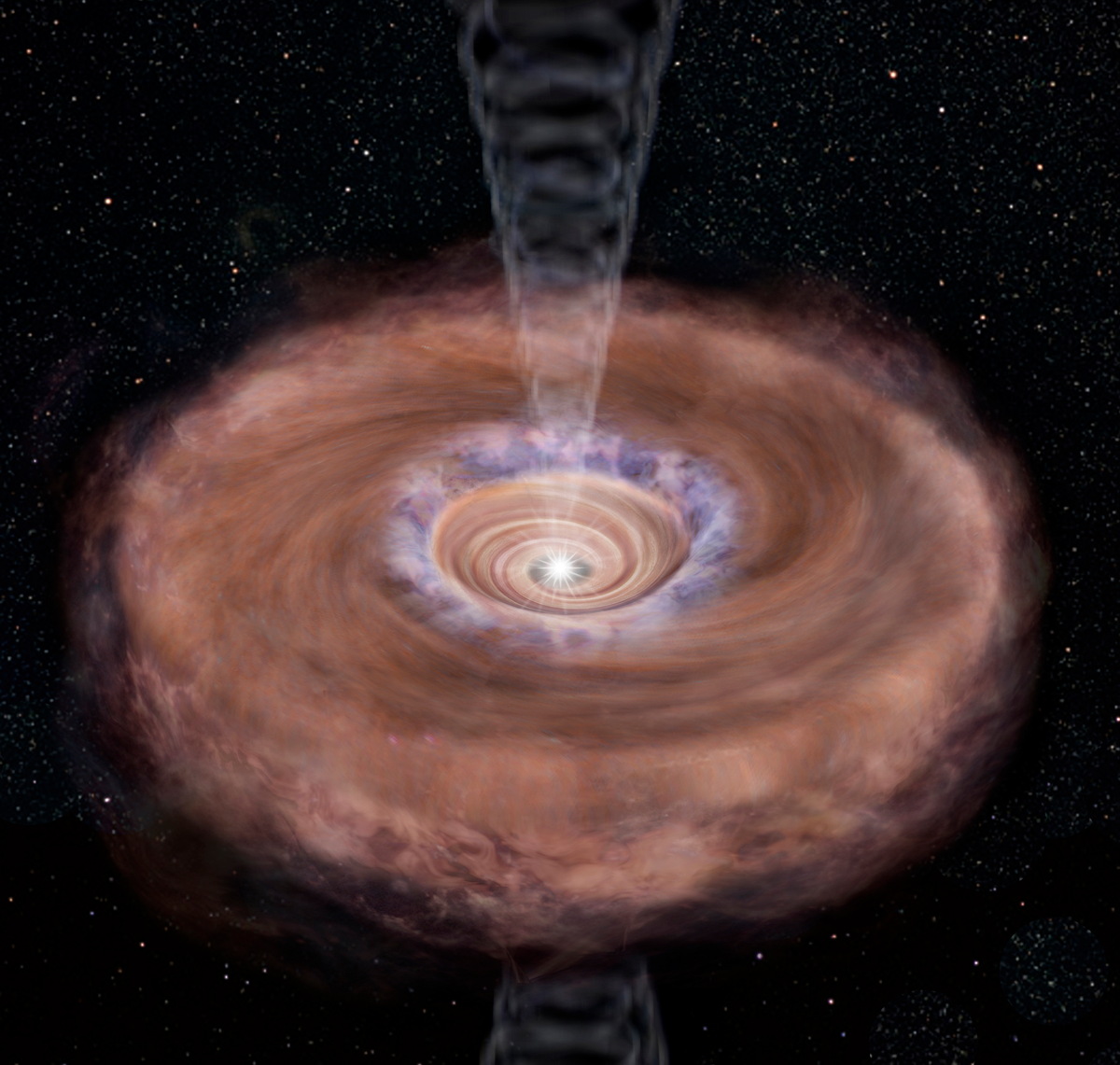Strange Star Chemistry May Reveal Secrets of Planetary Disks

A dusty gas cloud around a young sun-like star is surprising astronomers with its strange chemistry, suggesting that such planet-forming disks may be more complicated than previously thought.
An international team of scientists used the giant ALMA radio telescope in Chile's Atacama Desert to detect significant chemical changes in the star's dust cloud along a region known as the centrifugal barrier, where the pull of gravity no longer overcomes the centrifugal force rotating the gas.
"Spectral lines of these minor [chemical] species are faint, because of their low abundances," lead scientist Nami Sakai of the University of Tokyo told Space.com in an email. Sakai led the team of scientists that studied the young star and its gas cloud about 450 light-years from Earth. [Amazing Images from the ALMA Radio Telescope (Gallery)]
"But we were able to observe them, thanks to the high sensitivity of ALMA, and succeeded in discovering the drastic chemical change at the centrifugal barrier. No such exploration has been done before."

Curious chemistry around star
Gravity draws clouds of gas in space together to form new stars at their center. The gas left behind after the stellar birth continues to rotate around the new star, forming a disk that is further surrounded by an envelope of gas. Using the changing chemistry that exists at the border, the team could precisely mark the boundary of the two.
Scientists can probe these regions by studying the spectral lines emitted by simple molecules such as carbon monoxide. As technology has improved, other simple gases have been observed within such clouds, and the completion of ALMA and its high sensitivity and spatial resolution is expected to result in even more molecules, such as the cyclic-cyclopropenylidene (C3H2) and sulfur monoxide (SO) detected by Sakai's team.
Get the Space.com Newsletter
Breaking space news, the latest updates on rocket launches, skywatching events and more!
Cyclic-C3H2 has been detected in a variety of regions of space, where it plays a key role in producing other hydrocarbons, but the highly-reactive molecule can only be found on laboratories on Earth. It survives in environments like interstellar clouds because the density and temperatures are lower than those of Earth.
Sakai had previously studied the young star, which is located in the Taurus molecular cloud. The dense cloud is about 450 light-years from the sun, making it the closest large star-forming region to Earth. Her team had previously found rich carbon-chain molecules, and was eager to use ALMA to explore their origin and fate. [Video: Nursery of Baby Stars Spotted By Chandra]
"In the course of this observation, we unexpectedly found the chemical change at the centrifugal barrier," she said.
The rotation that helped birth the young star continues after its formation. Gravity pulls the gas toward the star, but distance limits its reach. At the centrifugal barrier, the force of rotation outweighs the force of gravity, and the star can longer fall inward.
Gas containing cyclic-C3H2 piles up at the outer edge of the barrier, increasing the density. Temperatures of the jammed up gas spike suddenly from minus 243 degrees Celsius (minus 405 degrees Fahrenheit) to temperatures of minus 213 C (minus 351 F) or higher. The heat increase allowed the particles of SO to jump directly from the solid to gas phase in a process known as sublimation. The complex chemicals only exist outside of the barrier; inside, both would be frozen out on dust grains, causing their spectral lines to disappear and marking the boundary between the disk and the envelope.
The research was published online today (Feb 12) in the journal Nature.

Solar system insights
The system resembles the early solar system. The young star has a mass of only 0.18 times that of the sun. The flattened envelope of gas around the young star stretches out to a thousand times the Earth-sun distance, known as an astronomical unit (AU). The disk, the future birthplace of planets, reaches 90 AUs, a distance that corresponds with the nebula of gas around the sun.
"The radius of the centrifugal barrier corresponds to the outer edge of the solar nebula," Sakai said. "Hence it may have a potential relation to the size of the planetary system to be formed."
Sakai doesn't anticipate that the complicated chemistry of the outer envelope is unique. The chemical change at the centrifugal barrier is caused by fundamental physics. It may help to not only understand the formation of other stars and planetary systems but also that of the early solar system.
Observations of the young star were made by ALMA radio telescope — the name is short for Atacama Large Millimeter Array — in 2012. At the time, the telescope comprised up to 25 antennas. In March 2013, all 66 antennas in the ALMA radio telescope array became fully active, allowing for even more detailed studies to be made.
Sakai hopes to put the full power of the telescope to good use.
"We need to observe other molecular species in this source at a higher spatial resolution to clarify the total view of the chemical change. It is also necessary to confirm whether similar situations are found in other protostars," she said. "These can be done with ALMA in its full operation."
Follow us @Spacedotcom, Facebook and Google+. Original article on Space.com.
Join our Space Forums to keep talking space on the latest missions, night sky and more! And if you have a news tip, correction or comment, let us know at: community@space.com.

Nola Taylor Tillman is a contributing writer for Space.com. She loves all things space and astronomy-related, and enjoys the opportunity to learn more. She has a Bachelor’s degree in English and Astrophysics from Agnes Scott college and served as an intern at Sky & Telescope magazine. In her free time, she homeschools her four children. Follow her on Twitter at @NolaTRedd











